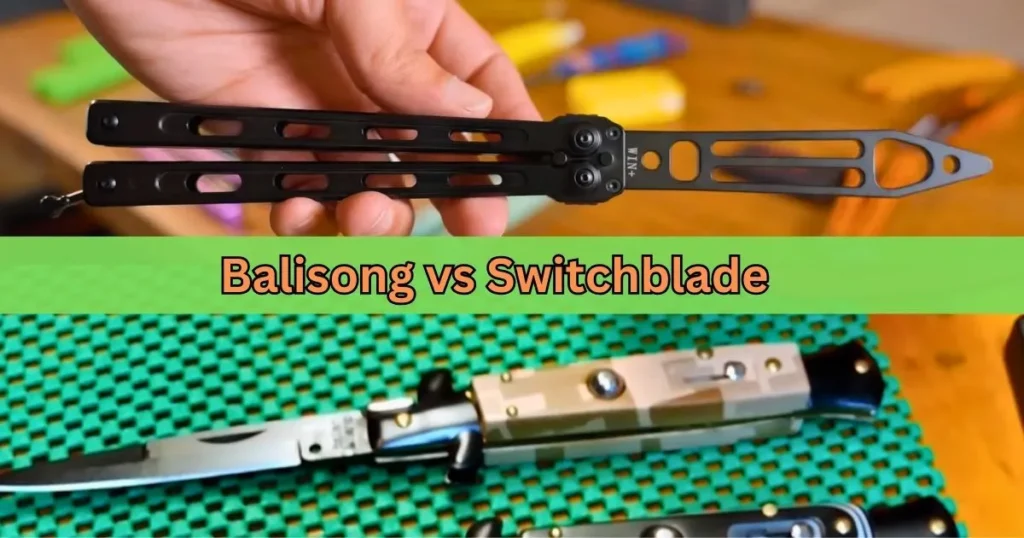The Ultimate Guide on How to Date Buck Knives
Table of Contents
Toggle
Date Buck knives have a rich history, dating back to 1902 when Hoyt Buck first created them. His goal was simple: to make durable, high-quality knives that could be relied upon. Over the years, Buck knives became famous for their strength and craftsmanship, especially models like the Buck 110 Folding Hunter and the Buck 121. These knives are not just tools—they represent a legacy of excellence.
For collectors and enthusiasts, the production year of Buck knives is crucial. Information helps determine the knife’s value, authenticity, and rarity. Knowing the production year can also help collectors assess the Vintage Buck knife price guide and understand how much a knife might be worth. The Buck date code chart plays a significant role in this. It provides a straightforward way to identify when a knife was made by reading its markings.
Knowing the date your Buck knives were made is essential if you’re into collecting. Understanding the history behind each model, such as the Buck Knife 121, allows you to appreciate your collection’s craftsmanship and value truly.
Overview of Buck Knives and Their Popularity
Buck knives are a reliable symbol of quality and craftsmanship. Renowned for their durability and practical design, they have long been a top choice for outdoor enthusiasts, collectors, and everyday users.
Key Features of Buck Knives
Buck knives are popular because of their top-notch quality, strong durability, and innovative designs. They are built to last, with sharp blades that stay effective over time. Whether you use a Buck knife for hunting, camping, or as part of your collection, it is made to meet high standards.
Iconic Models: Buck 110 and Buck 121
The Vintage Buck Knife 110 Folding Hunter is one of the most iconic models in the world of knives. Introduced in 1963, this knife revolutionized folding knives by combining the strength and reliability of a fixed blade with the convenience of a folder. Collectors enjoy dating these knives to explore their history.
Another standout is the Buck 121 Fisherman knife. Its design and effective blade make itorite for fishing and small game tasks. Learning the Buck Knife 121 history reveals how it was crafted with the angler in mind, making it a must-have for fishing enthusiasts.
These legendary models highlight why Buck knives remain so beloved. They represent a perfect balance of reality, durability, and style. Whether you’re learning to date Buck Knives 110 or appreciating their legacy, these knives are timeless treasures.
Understanding Buck Date Codes
Buck date codes are small symbols stamped on Buck knife blades. These codes indicate the year the knife was made, helping collectors and enthusiasts determine its age. Understanding these codes is essential for identifying authentic Buck knives and evaluating their historical and monetary value.

What Are Buck Date Codes?
Buck date codes are symbols or marks added to Buck knife blades. They were introduced in 1986 to indicate the manufacturing year. Before this, Buck knives had no specific codes, making older models harder to date.
The Evolution of Buck Date Codes
In the early years, Buck knives only stamped the brand name and model. This changed in 1986 when Buck introduced year-specific symbols. Each symbol represented a calendar year, creating a clear timeline for knife production. Over the years, the system has remained consistent, making it easier for collectors to track dates.
Current Buck Date Codes
Today, Buck uses a straightforward date-coding system. For instance, the Buck date code 2024 will have a unique mark that matches this year. This system applies to all Buck knives, including popular models like the Buck 309, which also uses a specific Buck 309 date code.
Using the Buck Date Code Chart
The Buck date code chart matches symbols with their corresponding years. It’s a must-have for anyone looking to date their Buck knives accurately.
By understanding Buck date codes, you can appreciate the history and craftsmanship of these iconic knives.
Step-by-Step Guide: How to Date Buck Knives
Buck knives have a rich history; dating them can tell you so much about their story. Here’s a simple, step-by-step guide to help you figure out when your Buck knife was made.

Identifying Markings and Logos
The first step in dating your Buck knife is to look for markings and logos. These are usually found on the blade, near the base.
Buck Knives have used different logos and markings over the years. For instance, early models didn’t have any date codes. Later, Buck added symbols like dots, dashes, or numbers to indicate the production year.
For example, the Buck 110 Folding Hunter may have markings corresponding to specific years. Similarly, knives like the Buck 309 and Buck 121 also have unique logos and codes to help date them.
This step requires using the Buck date code chart. The chart lists all the symbols and their corresponding years, making determining your knife’s age easy.
Using the Buck Date Code Chart
Once you’ve located the markings on your knife, the Buck date code chart becomes your best tool. It’s a simple table that matches symbols to years.
Look up the code near the logo to learn how to date Buck Knives 110. A dot before the “BUCK” might indicate one year, while a dash after could mean another.
Let’s take another example. The Buck 309 has codes like a single dash or an inverted symbol. The chart shows the production year of the Buck 309, and you can pinpoint its year of production by checking the date code.
The same goes for other models like the Buck 121. If you’re curious about the history of Buck Knife 121, date codes can tell you when it was first produced and how it evolved.
Analyzing Blade Steel and Handle Material
Sometimes, date codes alone aren’t enough. Blade steel and handle materials can give extra clues about your knife’s age.
Older Buck knives often use 440C stainless steel, but later models switched to 420HC steel. Changes like these can help narrow down the timeline.
Another big hint is the handle materials. Vintage Buck knives, mainly the Buck 110, often feature wood or phenolic resin handles, while newer models might have synthetic or modern composite materials.
Special Models and Variations
Buck knives have a rich history, and unique models stand out for their quality and legacy. The Buck 110, Buck 121, and Buck 309 deserve special attention. Let’s examine these iconic knives and what makes them unique.

Buck 110: The Folding Hunter
The Vintage Buck Knife 110 is one of the most popular Buck models. Introduced in 1963, it became a game-changer for hunters. Its folding design combined strength and portability, making it perfect for outdoor adventures. Over time, materials like the blade steel and handle evolved, adding to its collectible value. By checking the Buck date code chart, you can identify the year of your knife’s production, making exploring its history and value easier.
Buck 121: A Fisherman’s Companion
The Buck Knife 121 holds a special place in Buck’s history. Known as the “Fisherman,” it features a sleek design for precise cuts, making it a favorite for outdoor and kitchen use. Production changes over the years give collectors clues about its era. If you have one, comparing it with the Vintage Buck Knives Catalog can help confirm its production details and market value.
Buck 309: A Small Yet Mighty Knife
The Buck 309 stands out for its compact size and versatility. Its craftsmanship makes it a popular choice for everyday carry and appeals to collectors. Using the Buck 309 date code, you can trace its origin and learn more about its history.
These models represent Buck’s innovation and carry stories of tradition and craftsmanship. Whether you collect or use them, each knife tells a piece of Buck’s legacy.
Vintage Buck Knives Catalog
The Vintage Buck Knives Catalog is a valuable resource for anyone wanting to explore the history of Buck Knives. Over the years, Buck has produced various knives with unique styles and features. By looking at these catalogs, you can trace the evolution of Buck knives and learn about the design changes and models released in different years.
Catalogs are particularly helpful in dating Buck knives. They include images and descriptions of the knives available in specific years. When you compare these images with your knife, you can determine its age and model. The catalog includes the handle design, blade type, and unique markings. This makes it much easier to identify the knife and determine when it was made.
Knowing which catalog a knife appears in is crucial for collectors. It helps establish its authenticity and market value. Many collectors rely on the Vintage Buck Knife Price Guide to understand their knives’ worth. The guide considers the year of production, model, and condition, which can be cross-referenced with catalog information.
The Buck date code chart can help clarify your Buck knife’s age. Paired with catalog details, it provides a clearer picture of the knife’s history.
Vintage Buck Knife Price Guide
Several factors determine the price of vintage Buck knives. The most important ones are age, condition, and rarity. Let’s examine these factors.

Age and Condition
Older knives, especially those from the 1960s and 1970s, tend to be more valuable. As time passes, they become rare and more complex to find. The condition of the knife is just as critical. A well-maintained knife in good condition will always fetch a higher price. Knives with scratches, chips, or rust lose value. Original parts, like the blade and handle, also play a significant role.
Rarity
Rare Buck knives can be worth a lot more. Collectors, for example, highly seek limited-edition models or those with unique features. A rare Buck date code knife might be priced higher than others as collectors seek these exceptional items.
Pricing Trends
In recent sales, vintage Buck knives have shown steady value increases. For example, models like the Buck 110 in excellent condition can sell for up to $100 or more. Limited-edition knives can even go beyond that. Using a Vintage Buck knife price guide will help you understand the current market value.
Collectors often refer to the Vintage Buck Knives Catalog to find detailed pricing trends and historical data on various models. This catalog helps understand Buck knives’ evolution and guides collectors in determining a knife’s worth.
You can better understand the value of your vintage Buck knife by considering its age, condition, rarity, and tools like the Buck date code chart.
Caring for and Preserving Buck Knives
If you own a vintage Buck knife, proper care can keep it in great shape for years. Cleaning and maintaining your knife will help preserve its value and function. Here are some best practices to ensure your Buck knife stays in top condition.

Cleaning Your Buck Knife
First, clean your knife after every use. Wipe it down with a soft cloth to remove dirt, grease, or moisture. For deeper cleaning, use warm, soapy water and a toothbrush to scrub away any grime. Be sure to dry the knife to avoid moisture buildup, which can lead to rust.
Preventing Rust and Wear
Rust is one of the biggest threats to your vintage Buck knife. To prevent it, apply a thin layer of oil to the blade. Use mineral oil or any oil made explicitly for knives. This protective layer helps keep the metal from rusting and ensures smooth blade movement.
Store your knife in a dry, cool place. A wooden or leather sheath can help protect the blade from scratches and dust. Avoid leaving it in damp areas or carrying it without proper protection.
Preserving the Handle
The handle is just as important as the blade. Vintage Buck knives often have handles made from wood or plastic, which can degrade over time. To maintain its shine and integrity, keep the handle clean and, if necessary, treat it with oil.
These simple tips ensure your Buck knife stays functional and valuable for years. Whether you’re checking a Buck date code chart or flipping through a Vintage Buck knives catalog, well-maintained knives always fetch higher prices in the market, as noted in the Vintage Buck knife price guide.
Conclusion
Dating Buck knives can be an exciting and rewarding journey for collectors and enthusiasts. Understanding the Buck date code chart is key. It helps identify the production year of your knife. The Vintage Buck Knives Catalog is another helpful resource to track the evolution of Buck Knives over time. By looking at the markings, logos, and materials, you can pinpoint the age and model of your knife.
To date, Buck knives, check for a date code or logo on the blade or tang. If there’s no code, don’t worry! You can still use other clues like the design and materials to get a good idea of the knife’s age.
This process can be fun and informative, especially when diving into each model’s history. Do you have a Buck knife with a mysterious date code? Or a favorite vintage Buck knife story? Feel free to share in the comments below! We’re excited to hear from you.
FAQs
Look for date codes on the blade or tang. Use the Buck date code chart to interpret the markings and determine the year.
The Buck date code chart matches letter-number combinations to specific years, helping you identify when your knife was made.
Yes, but it’s more complicated. For clues, look at logo style, materials, and design. Vintage Buck knife catalogs can also help.
Dating is tricky without markings, but design and material details may help estimate its age.
Dating helps determine the knife’s value, authenticity, and historical significance, which is essential for collectors.
Find the code on your knife and match it to the chart to discover the year. Each letter-number combination represents a specific year.
Check markings and features for clues. For valuable knives, consider getting a professional appraisal.
Yes, counterfeits exist. Check the markings and quality against authentic models to avoid fakes.
Related Posts
-
 17 Dec 2024 KnifeThe Ultimate Guide on How to Date Buck Knives
17 Dec 2024 KnifeThe Ultimate Guide on How to Date Buck Knives -
 17 Dec 2024 KnifeHow Old Is My Buck Knife? A Comprehensive Guide
17 Dec 2024 KnifeHow Old Is My Buck Knife? A Comprehensive Guide -
 16 Dec 2024 KnifeBalisong vs Switchblade: Which Knife Suits Your Needs Best?
16 Dec 2024 KnifeBalisong vs Switchblade: Which Knife Suits Your Needs Best? -
 16 Dec 2024 KnifeBalisong vs Butterfly Knife: What’s the Real Difference?
16 Dec 2024 KnifeBalisong vs Butterfly Knife: What’s the Real Difference? -
 13 Dec 2024 KnifeCan You Sharpen Clipper Blades? A Complete Guide
13 Dec 2024 KnifeCan You Sharpen Clipper Blades? A Complete Guide -
 12 Dec 2024 KnifeCan You Ship Knives Through USPS? A Comprehensive Guide
12 Dec 2024 KnifeCan You Ship Knives Through USPS? A Comprehensive Guide -
 10 Dec 2024 KnifeWhat Grit Whetstone for Kitchen Knives? Expert Tips Inside!
10 Dec 2024 KnifeWhat Grit Whetstone for Kitchen Knives? Expert Tips Inside! -
 07 Dec 2024 KnifeHow Long Can a Kitchen Knife Be Wet? A Practical Guide
07 Dec 2024 KnifeHow Long Can a Kitchen Knife Be Wet? A Practical Guide -
 05 Dec 2024 KnifeHow to Sharpen a Sickle Like a Pro: Expert Tips
05 Dec 2024 KnifeHow to Sharpen a Sickle Like a Pro: Expert Tips -
 05 Dec 2024 KnifeHow to Sharpen Titanium Coated Knife - Expert Tips
05 Dec 2024 KnifeHow to Sharpen Titanium Coated Knife - Expert Tips














